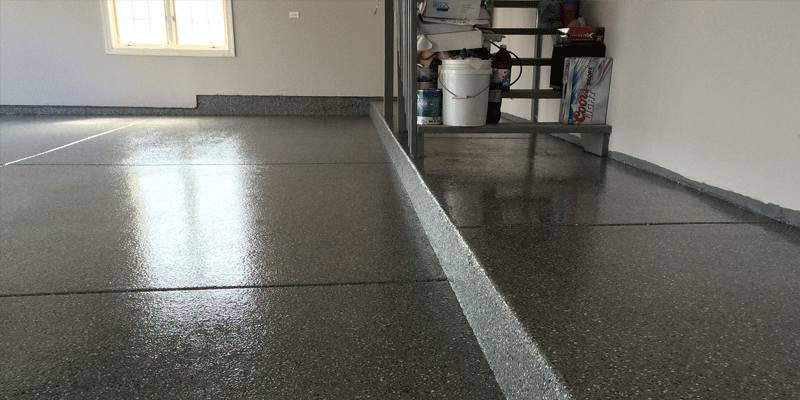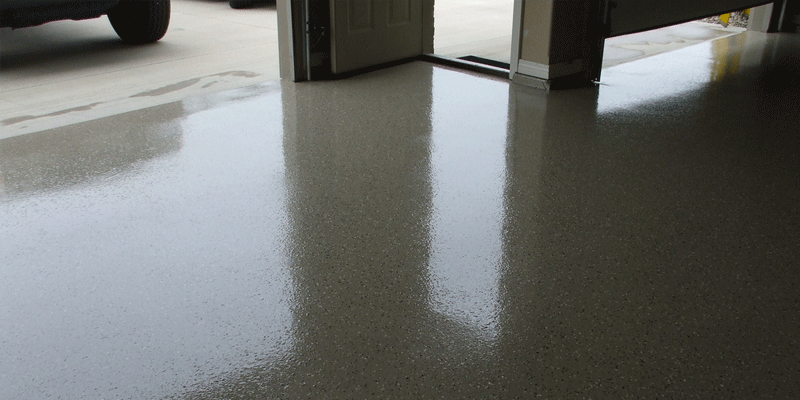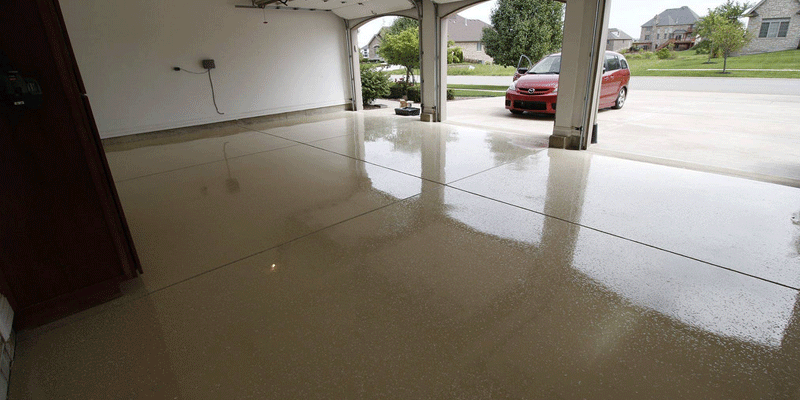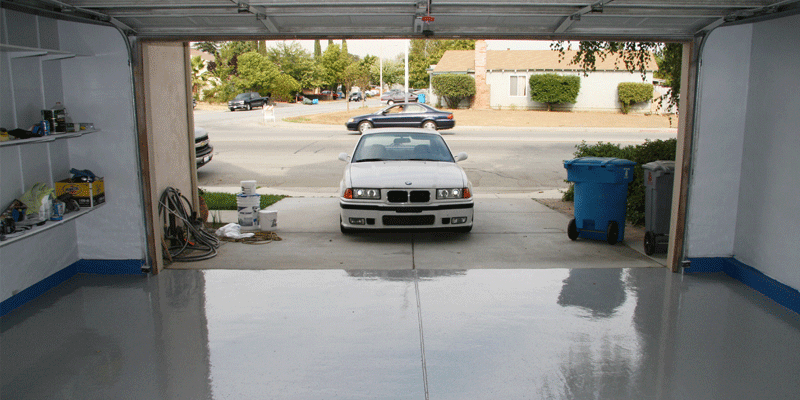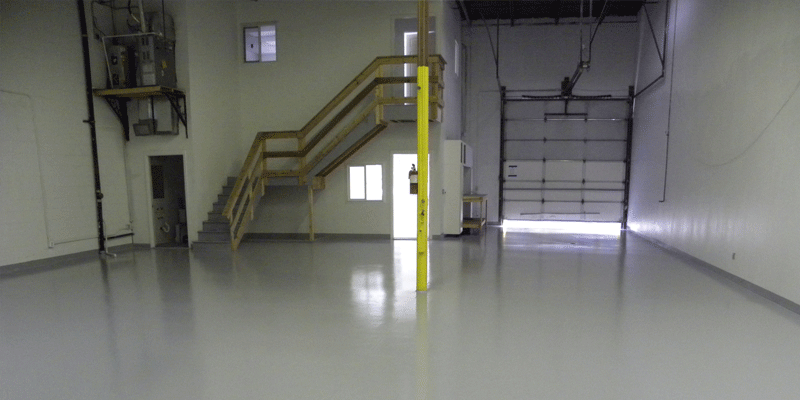Epoxy Flooring vs. Concrete Polishing: Learn the Differences
The good news is that problems with floors are relatively easy to fix – whether it’s an issue with your concrete or if you’ve opted for epoxy flooring instead of polished concrete. Here’s what you need to know:
Concrete Polishing vs. Epoxy Flooring
If you choose polished concrete over epoxy flooring, the process involves an acid solution and diamond grinding wheels, which remove the top layer of the hard dolomite concrete – similar to how a mechanic grinds off excess paint or rust from a metal car part. You can use a soft grinding method, but the results won’t be as durable and will typically last for less than ten years.
Epoxy flooring is made of two components: an epoxy resin and an aggregate, which are most often quartz chips that are available in different colors. Once the mixture has been thoroughly combined, it’s applied over your concrete below with either a sprayer or roller then allowed to dry until it’s hard enough not to be scuffed by shoes. This process can take anywhere from one day to several days, depending on humidity levels, air temperature, and thickness of the application.
Epoxy flooring is a popular choice in a number of different situations:
It won’t fade, crack or stain plus you can choose from a wide range of colors and styles. Because it’s extremely durable, epoxy flooring makes an excellent choice for high-traffic rooms such as entryways, hallways, and basements. However, if you have pets that will be walking on the floors very often, then there are specific types of epoxy flooring that have been designed to stand up to all kinds of wear and tear, including claw marks from cats and scratches from dogs.
Common Installation Areas for Polished Concrete:
- Entryways
- Basements
- Garages
- Sunrooms
- Patios and Decks
- Pool Areas
Common Installation Areas for Epoxy Flooring:
- Garages
- Basements
- Retail Stores
- Hospitals
- Kitchens
- Schools
The main difference between these two surfaces is the wear factor. Concrete polishing will last longer than epoxy flooring because it’s closer to the actual concrete, which won’t so easily scuff or scratch.
However, polished concrete isn’t as durable as epoxy flooring when it comes to exposure to chemicals such as oil, gasoline, brake fluid, bleach, and other cleaners that are sometimes spilled on floors. Epoxy won’t be affected by exposure to these types of liquids, whereas polished concrete can be discolored if it happens to come in contact with them. If you’re not sure which type of surface is best for your home, then the experts at Best Level Construction will be able to help you make your decision.
Top Differences Between Epoxy and Polished Concrete
Both types of flooring – epoxy and polished concrete – have their own benefits and drawbacks:
Opt for the least durable surface to keep your costs to a minimum. Epoxy is less expensive than polished concrete. Even so, it’s better than using no floor at all. Polished concrete will last longer, but it also costs more upfront. It’s possible to install both types of flooring in your home if you’re willing to pay for each one separately or put the project on hold until you save up enough money for both types of floors.
Important Factors to Consider
When choosing between these two popular renovation projects, start by thinking about how long you plan on staying in your home, followed by how much money you can afford to spend right now on new flooring.
If you expect to move within a few years, then it’s best to use epoxy flooring because while polished concrete is more durable, it’s also more expensive and won’t last nearly as long in comparison with epoxy flooring, which can be reinstalled over new concrete if necessary. If you have pets that frequently walk on your floors, choose epoxy instead of polished concrete because the latter will scratch over time, whereas the former won’t. Finally, consider the different prices for each type of flooring and how long each one will last before making a final decision between polished concrete and epoxy.
How to Choose a Material
Some people have a hard time choosing between epoxy and polished concrete. But when you look at the bigger picture, it’s easy to see that there’s no reason to let this decision stress you out. After all, both materials bring plenty of benefits, such as durability and beauty. To help you make an informed choice ask yourself these three questions:
What will I use my new flooring for?
How long do I plan on staying in this home?
How much can I spend right now?
If your answer is short, low, and epoxy, then go with that option instead of polished concrete because it won’t last nearly as long in comparison but will be less expensive upfront, which means you’ll get a better bang for your buck. If you’re planning on moving within a few years, then you should probably choose polished concrete instead because it will last longer and cost more upfront. If you have pets or small children who’ll spend a lot of time walking across your floors – especially if you also have a high traffic room – choose epoxy flooring instead since the former is less likely to scratch over time, whereas the latter will scuff under those circumstances.
Epoxy flooring costs far less than polished concrete but doesn’t last as long, whereas polished concrete can be scratched by heavy objects such as strollers and wheelchairs but is more durable. In general, consider how much you’re willing to spend right now as well as how long you plan on staying in this home before making a final decision between epoxy and polished concrete.

